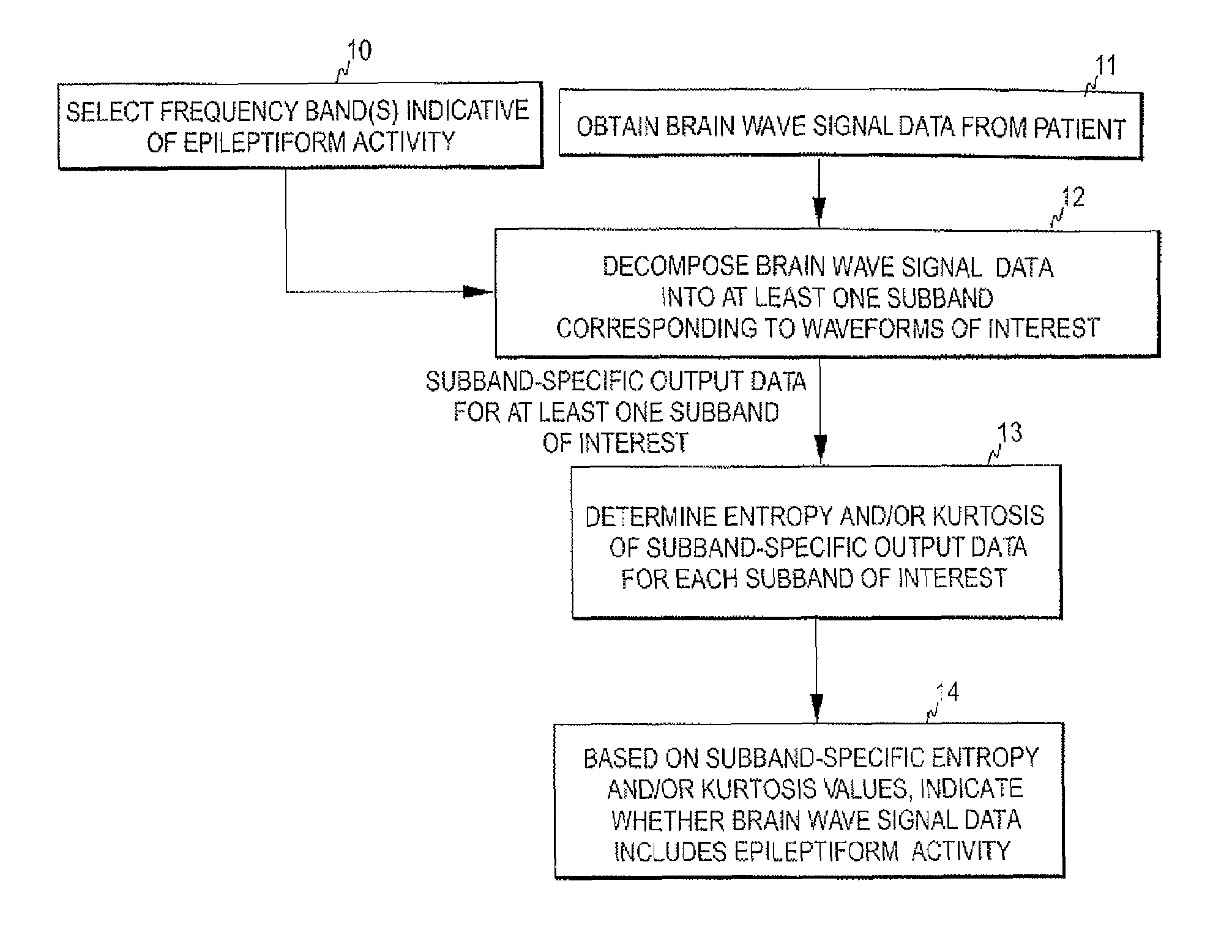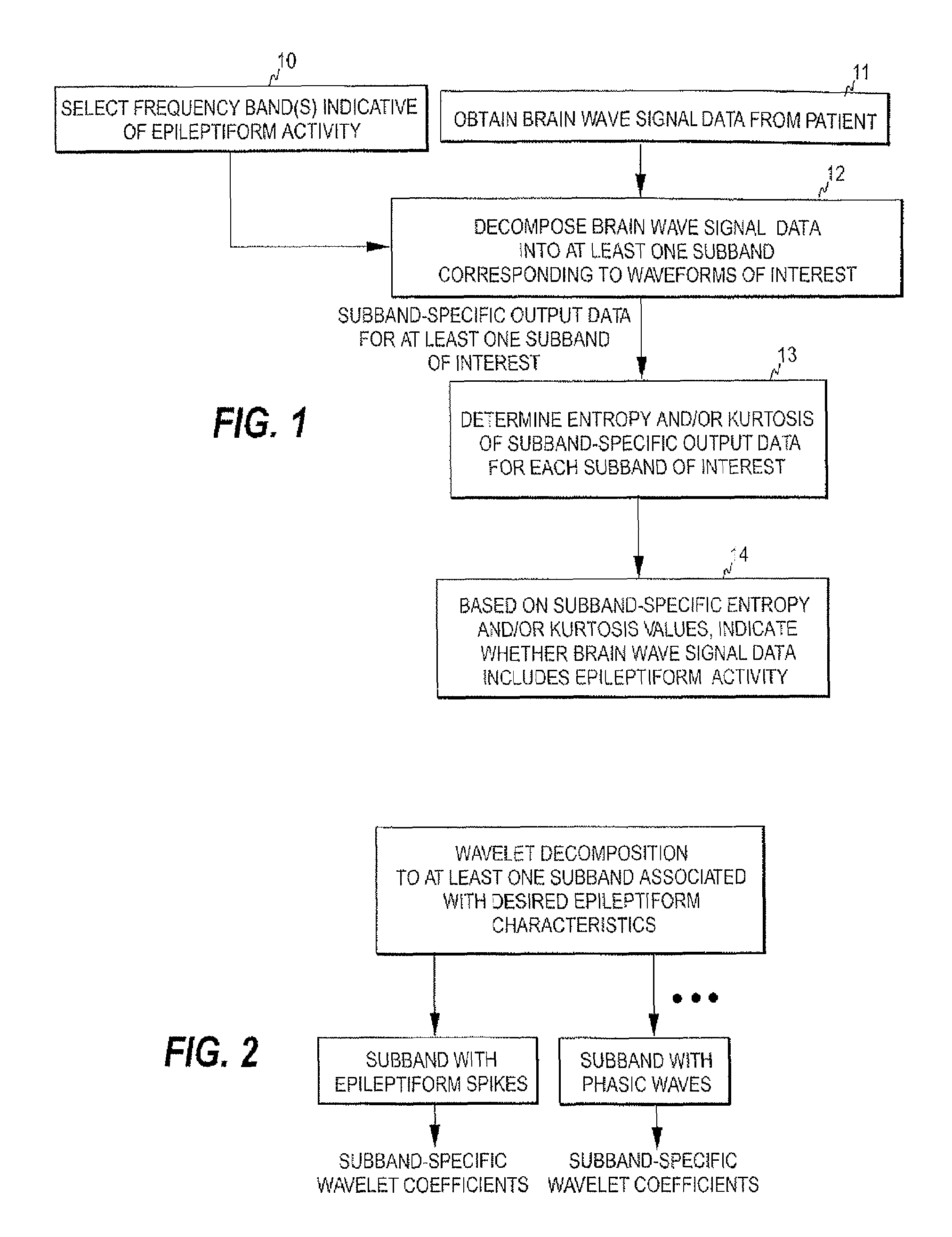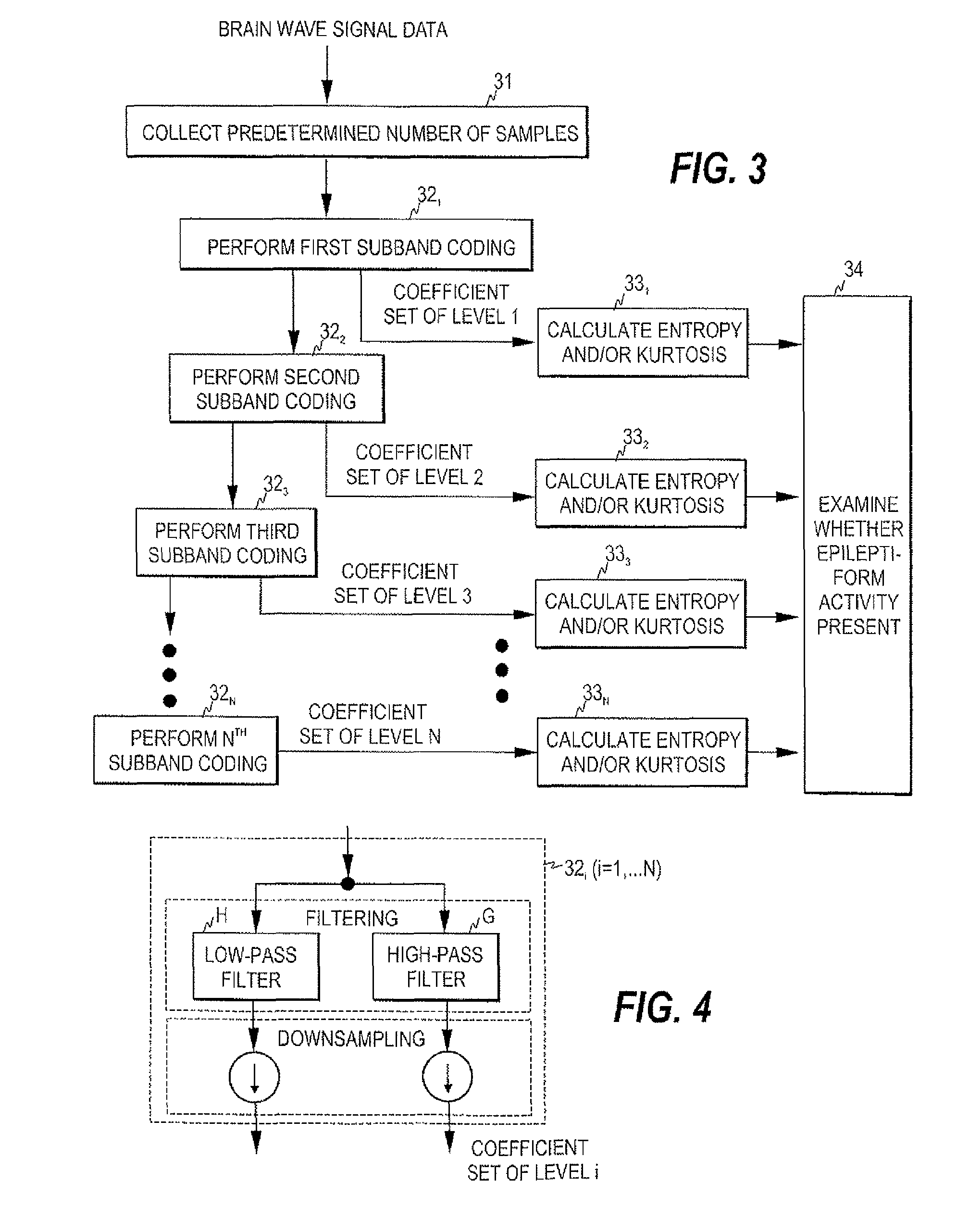Detection of epileptiform activity
a technology of epileptiform activity and detection field, which is applied in the field of detection of epileptiform activity, can solve the problems of high morbidity and mortality, and disturbed brain function and the resulting eeg, and achieves the effect of efficient computation power
- Summary
- Abstract
- Description
- Claims
- Application Information
AI Technical Summary
Benefits of technology
Problems solved by technology
Method used
Image
Examples
Embodiment Construction
[0040]Below, different embodiments of the invention are discussed assuming that the brain wave signal data measured from the patient is EEG signal data and that either one or both of the entropy and kurtosis of the subband-specific output data is / are used as the indicator(s) of epileptiform activity.
[0041]FIG. 1 is a flow diagram illustrating the detection mechanism of the invention. As discussed above, the epileptiform EEG activity may include spiky waveforms. Although the frequency contents of the spikes may reach up to about 70 Hz, epileptiform EEG components are typically below 30 Hz. In the present invention, at least one EEG frequency band is selected, which contains epileptiform activity (step 10) and the raw EEG signal data obtained from a patient is decomposed into at least one subband on which the waveforms of interest appear (steps 11 and 12) so as to obtain subband-specific output data for each of the at least one subband. For example, if epileptiform spikes are to be de...
PUM
 Login to View More
Login to View More Abstract
Description
Claims
Application Information
 Login to View More
Login to View More - R&D
- Intellectual Property
- Life Sciences
- Materials
- Tech Scout
- Unparalleled Data Quality
- Higher Quality Content
- 60% Fewer Hallucinations
Browse by: Latest US Patents, China's latest patents, Technical Efficacy Thesaurus, Application Domain, Technology Topic, Popular Technical Reports.
© 2025 PatSnap. All rights reserved.Legal|Privacy policy|Modern Slavery Act Transparency Statement|Sitemap|About US| Contact US: help@patsnap.com



